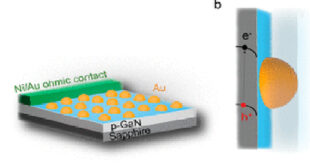Significance
Condensed-phase systems exhibit both dynamical and structural properties that can be measured by their spectra in the low-frequency region. Today, far-infrared spectroscopy has become an essential tool for many researchers for studying those dynamical and structural properties, and understanding of the spectral intensities and their generation mechanisms is essential for this purpose. The systems dynamics together with its relations with radiation determines the spectral profiles. For example, the dynamics in the hydrogen-bonding system results in the modulation of the electron densities.
Analysis has been conducted in different types of hydrogen-bonding system such as liquid water. For instance, for liquid water, the intensity of the band in the far-IR spectrum results from the intermolecular charge flux induced due to the hydrogen-bond length modulation and the resultant electron density transfer between the molecules. The formation of the hydrogen bond also led to a reduction in the molecular bond strength. However, to have a more in-depth conceptualization and understanding of the results, there is a significant need to perform similar experiments and analyses with other types of hydrogen-bonding systems.
Recently, Professor Hajime Torii at Shizuoka University in Japan investigated the intensity generation mechanisms of the far-infrared spectrum of liquid formamide. Also, modulation of the conditions of the hydrogen bonding molecules and their influences on the behaviors of the electrons was examined. He used a two-step approach method based on analysis of the dipole derivative changes through application of the density functional theory (DFT) calculations of large formamide clusters and dimers, and molecular dynamics (MD)-based spectral simulations. Eventually, he compared and contrasted the results obtained in this case using liquid formamide and those obtained in the case of liquid water. The work is currently published in the research journal, Physical Chemistry Chemical Physics.
Professor Hajime Torii successfully showed the intermolecular charge flux mechanism similar to that obtained in the case of liquid water resulting from the hydrogen bond formation that led to dipole derivative changes in the direction of the formed bond. Consequently, from the MD-based spectral simulations, it was observed that the reproduction of the features of the far-IR spectrum, of liquid formamide, depended on the intermolecular charge flux. However, unlike in liquid water, here the intermolecular charge flux was responsible for the enhanced molecular rotation band.
The investigated model for liquid formamide had the ability to efficiently reproduce the features observed in the far-IR thereby making it simpler to compare and contrast it to the case of liquid water. Generally, the similarities and differences between the two results were attributed to the fact that the dynamics of the molecules results in the modulation of the hydrogen-bond lengths thus giving rise to intermolecular charge fluxes. The charge fluxes, in turn, affect the dipole derivatives and the IR intensity distributions within the spectra. Furthermore, the author also pointed out the effect of the geometrical relation between the intermolecular atomic displacements (rotations and translations) and the hydrogen bonds.
Professor Hajime Torii is optimistic that the results obtained in his study and the model developed therein will advance further the in-depth understanding, interpretation, and clarity of the far-infrared spectra of condensed-phase systems, and in particular the hydrogen-bonded systems.

Reference
Torii, H. (2018). Intermolecular charge fluxes and far-infrared spectral intensities of liquid formamide. Physical Chemistry Chemical Physics, 20(5), 3029-3039.
Go To Physical Chemistry Chemical Physics Advances in Engineering Advances in Engineering features breaking research judged by Advances in Engineering advisory team to be of key importance in the Engineering field. Papers are selected from over 10,000 published each week from most peer reviewed journals.
Advances in Engineering Advances in Engineering features breaking research judged by Advances in Engineering advisory team to be of key importance in the Engineering field. Papers are selected from over 10,000 published each week from most peer reviewed journals.


